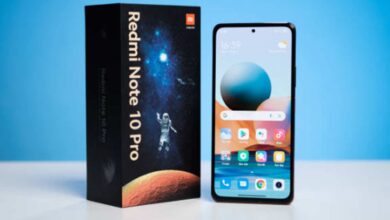Mobile devices have become an essential part of our daily lives. We use them to connect with family and friends, access sensitive information, and conduct financial transactions. As mobile devices become more advanced, the security threats associated with them become more sophisticated as well. Mobile security threats can compromise user privacy and lead to identity theft and financial loss.
Here is a complete guide for you explaining mobile security threats and their types.
What Are Mobile Security Threats?
Mobile security threats are any potential risks or vulnerabilities that can compromise the security of a mobile device or the data stored on it. These threats range from malware infections and phishing attacks to physical theft and unauthorized access. Further, mobile security threats can lead to identity theft, financial loss, and sensitive personal or business information exposure.
3 Types of Mobile Security Threats
1. Application-based security threats
One of the most common types of mobile security threats is application-based threats. These threats occur when users download apps that look legitimate but, in reality, skim data from their devices. Examples of application-based threats include spyware and malware that steal personal and business information. Such threats can cause significant financial and reputational damage to individuals and organizations.
2. Web-based mobile security threats
Web-based mobile security threats are another type of threat that can go unnoticed. These threats occur when users visit affected sites that seem legitimate on the front end but, in reality, automatically download malicious content onto their devices. This can lead to data theft and other security breaches, making it essential to use a trusted web browser and stay cautious while browsing the internet.
3. Mobile network security threats
Mobile network security threats are especially prevalent in public Wi-Fi networks, where cybercriminals can steal unencrypted data. These threats can occur when users connect to a compromised Wi-Fi network, and attackers can intercept data or inject malware onto their devices. A virtual private network (VPN) can provide an additional layer of security when using public Wi-Fi networks.
Top 7 Mobile Security Threats
1. Malware
Malware is a type of software designed to damage or disrupt mobile devices. It can be downloaded unknowingly when users download apps or click on malicious links. Malware can steal personal information, track user activity, and install unwanted apps. To prevent infecting mobile devices, users should avoid downloading apps from untrusted sources, regularly update their device software, and install a reliable antivirus app.
2. Phishing
Phishing is a social engineering technique attackers use to steal sensitive information, such as passwords and credit card numbers. Phishing attacks are usually carried out through email or text messages that appear to be from a legitimate source. Users should be wary of unsolicited messages and avoid clicking on links or attachments from unknown senders. Ensuring that the websites accessed are secure and legitimate is also important.
3. Man-in-the-middle (MitM) attacks
MitM attacks occur when an attacker intercepts communication between two devices to steal information. MitM attacks can occur on public Wi-Fi networks or through malware. Users should avoid using public Wi-Fi networks when accessing sensitive information and instead use a virtual private network (VPN) or secure Wi-Fi network. It is also important to regularly update device software to prevent attacks.
4. Data leakage
Data leakage occurs when sensitive information is unintentionally or maliciously disclosed to unauthorized users. This can occur through apps that request excessive permissions, insecure communication channels, or lost or stolen devices. Users should only install apps from trusted sources, regularly back up their data, and enable device encryption. It is also important to ensure that all communication channels are secure, including email, text messaging, and social media.
5. Physical theft
Physical theft occurs when mobile devices are lost or stolen. This can lead to data loss or theft, unauthorized access, and identity theft. Users should enable strong passwords, biometric authentication, and remote wipe capabilities to prevent unauthorized access to lost or stolen devices. Avoid storing sensitive information on mobile devices, such as passwords and credit card numbers, is also important.
6. Unsecured apps
Unsecured apps can compromise user privacy and security by requesting excessive permissions or exposing sensitive information. Users should only install apps from trusted sources and read the permissions carefully before installing. Regularly updating and deleting unused apps is also important to reduce the risk of vulnerabilities.
7. Jailbreaking and rooting
Jailbreaking and rooting are techniques to remove device restrictions and gain administrative privileges. This can allow users to install unauthorized apps and access sensitive information. However, jailbreaking and rooting can expose devices to malware and other security threats. Users should avoid jailbreaking or rooting their devices and instead use trusted apps and software.
Conclusion
In conclusion, mobile devices are vulnerable to various security threats that can compromise user privacy and lead to financial loss. Users can protect themselves by avoiding untrusted sources, enabling security features, regularly updating software, and using strong passwords and authentication methods. By following these guidelines, users can minimize the risk of mobile security threats and ensure the safety of their personal and sensitive information.








